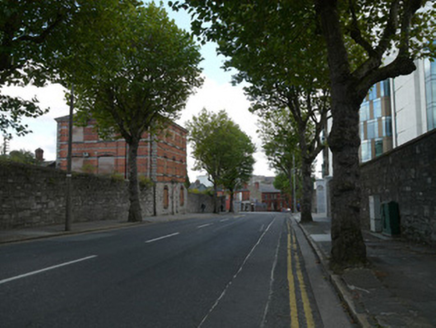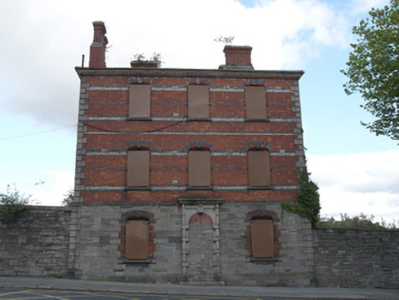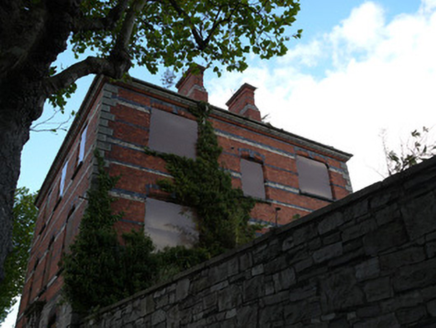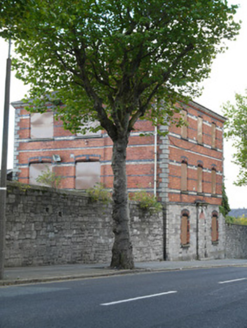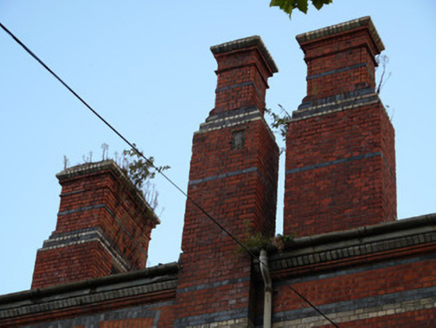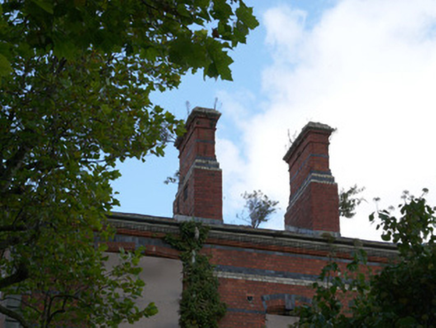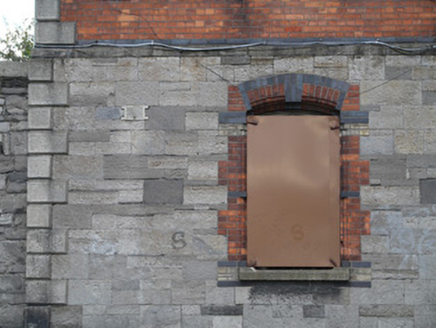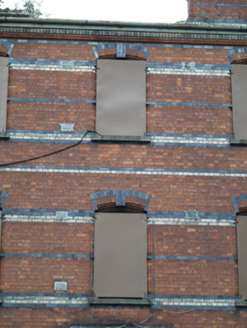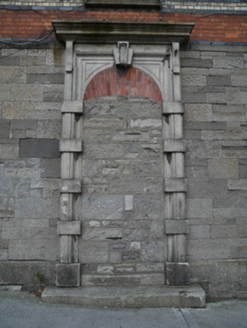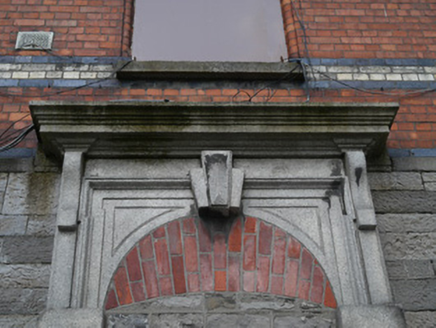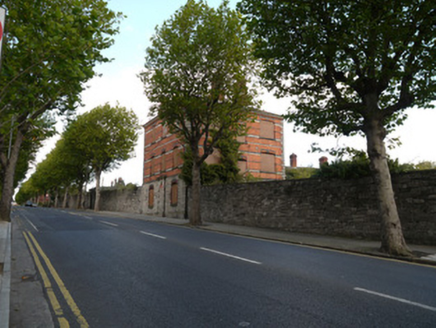Survey Data
Reg No
50070131
Rating
Regional
Categories of Special Interest
Architectural, Artistic, Historical, Social
Previous Name
Infirmary Road Barracks RAMC
Original Use
Building misc
In Use As
Building misc
Date
1880 - 1900
Coordinates
313577, 234565
Date Recorded
06/10/2012
Date Updated
--/--/--
Description
Detached three-bay three-storey former barracks entrance building, built c.1890. Hipped slate roof with central valley. Red and yellow brick cornice to eaves. Red brick chimneystacks having stepped profile and yellow and black decorative courses. Red brick walls having yellow and black brick decorative courses, cut granite platband over snecked ashlar limestone to ground floor. Rusticated granite quoins. Segmental-arched window openings having rounded reveals, black brick keystone detail and cut granite sills. Block-and-start red and black brick surrounds to ground floor windows. Window openings boarded up. Round-headed door opening with carved granite surround having carved cornice supported by brackets and Gibbsian surround with carved keystone. Entrance opening has been infilled with stone and brick. Single granite step from entrance to footpath. Front (west) elevation stands slightly forward of snecked limestone boundary wall.
Appraisal
This former entrance building has a strong and imposing form giving a prominence to the former Royal Army Medical Corps Barracks on Infirmary Road, a complex that is otherwise hidden from the public realm. The ground floor stone elevation is similar in character to the adjoining boundary walls and the boundary walls to Phoenix Park on the west side of the road, together they provide a cohesive background to the tree-lined streetscape. Its fine brickwork with coloured brick detailing adds interest and scale helping to breakdown the scale of the structure. The granite entrance surround displays skilled stonemasonry and relates to the granite entrance arch on the south-west side of the same road at the entrance to the former Royal Military Infirmary, emphasising the historic association between both sites. The Medical Corps would have been employed in the infirmary and in the isolation hospital to the north.
